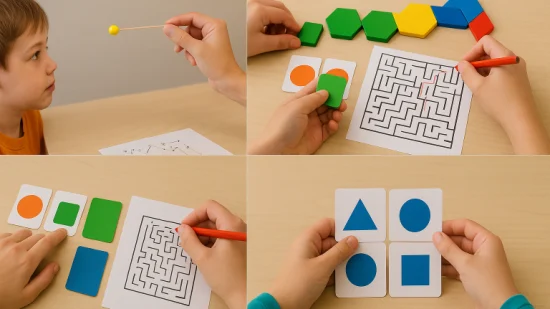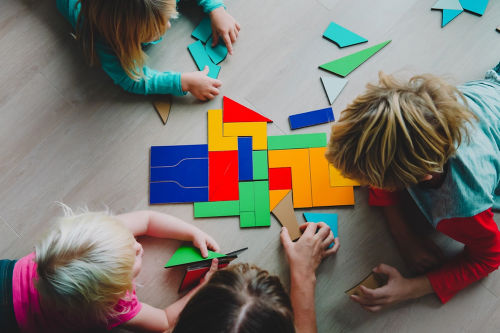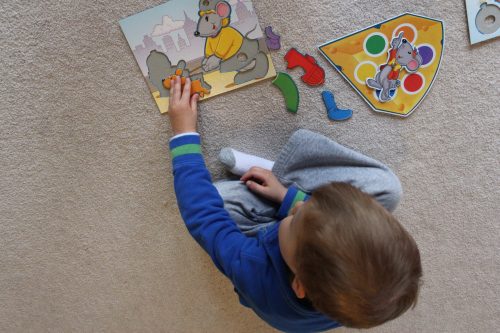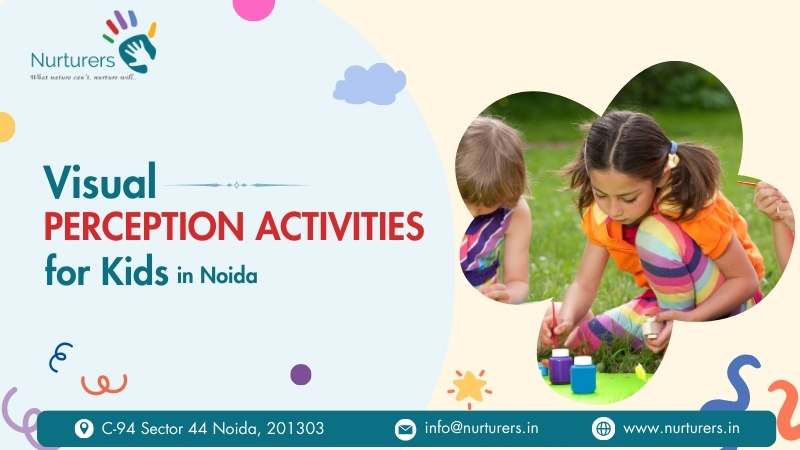Visual perception plays a vital role in a child’s learning, communication, and daily life skills. It refers to the brain’s ability to interpret and make sense of what the eyes see. For children, especially during their early developmental years, strengthening visual perception is essential for reading, writing, problem-solving, and overall academic performance. In Noida, many occupational therapy centers focus on visual perception activities that help children improve focus, coordination, and understanding of their environment. These activities are designed in fun and engaging ways so that children learn while enjoying the process.
By addressing areas like visual memory, spatial awareness, visual-motor integration, and figure-ground perception, therapists guide children towards becoming more confident and independent. Parents in Noida are increasingly recognizing the importance of such activities, as they not only support academic growth but also enhance everyday life skills, preparing children for a brighter and more capable future.
Understanding Visual Perception in Children
Before exploring activities, it’s important to define visual perception. In simple terms, visual perception is the brain’s ability to interpret and make sense of what the eyes see. It is not just about having clear eyesight but about processing and understanding visual input.
The broader visual perception meaning covers skills like:
- Visual discrimination – spotting differences and similarities (e.g., finding two identical pictures).
- Visual memory – remembering what you saw (e.g., recalling the letters of a word).
- Visual spatial relationships – understanding where objects are in relation to each other (e.g., left vs. right, above vs. below).
- Form constancy – recognizing shapes or letters even if they are in a different size or angle (e.g., recognizing “A” in different fonts).
- Visual closure – identifying an object even when part of it is missing (e.g., guessing a picture from half an image).
- Figure-ground perception – focusing on one object while ignoring background distractions (e.g., finding words in a word-search puzzle).

Why Visual Perception Matters for Children?
Strong visual perception skills are the foundation for many daily tasks. Without them, children may experience difficulties such as:
- Struggling with reading because they cannot recognize letters quickly.
- Poor handwriting as they cannot copy shapes or words properly.
- Trouble with math skills such as aligning numbers or recognizing patterns.
- Frustration with sports or play activities that require quick responses.
In classrooms, children with weak visual perception often get labeled as “slow learners” when the real issue is not intelligence but their ability to process what they see. At Nurturers in Noida, we identify these gaps early and design personalized visual perception activities to help children overcome them.

The Role of Occupational Therapy
This is where visual perception activities occupational therapy plays an important role. Occupational therapists assess the child’s strengths and challenges and then create a structured plan to improve these skills. For example:
- If a child struggles with visual memory, activities like “spot the difference” or matching picture cards are introduced.
- If spatial awareness is weak, block building, mazes, or copying designs are used.
- If handwriting is a concern, tracing, letter formation, and visual-motor integration games are included.
Occupational therapy is not just therapy—it’s play with a purpose. Children feel like they are engaged in fun games, while in reality, they are building life-changing skills.

Effective Visual Perception Activities for Kids
At Nurturers, Noida, we use carefully designed visual perception activities that make learning both enjoyable and purposeful. These activities target specific areas of difficulty while keeping children motivated through fun and play.
1. Sorting and Categorizing
Children sort objects by color, size, or shape, which builds visual discrimination—the ability to notice small differences and similarities. This skill is crucial for reading, as children must differentiate between letters like “b” and “d” or “p” and “q.” At home, parents can encourage sorting laundry, toys, or even vegetables.
2. Jigsaw Puzzles
Completing puzzles enhances problem-solving, attention to detail, and spatial awareness. Children learn to see how pieces fit together, which directly helps with sequencing and math-related skills. For younger kids, start with big, simple puzzles and progress to smaller, more complex ones.
3. Pattern Games
Using beads, sticks, or blocks to create and copy patterns improves sequencing and prediction. This builds early math skills and logical thinking. Children also strengthen their ability to recognize order, which helps in subjects like multiplication and reading comprehension.
4. Tracing, Coloring, and Copying
Activities such as tracing letters, coloring inside lines, or copying shapes from a model develop visual-motor integration. These improve handwriting, drawing, and attention span. Therapists at Nurturers often combine tracing with fun themes like animals or cartoons to make the task enjoyable.
5. Hidden Picture Games
In these games, children search for small objects hidden within a busy background. This strengthens figure-ground perception, helping kids focus on important information while ignoring distractions—a vital classroom skill when copying from the board or reading in noisy environments.
6. Maze Activities
Completing mazes requires planning and coordination between eyes and hands. It builds eye-hand coordination, problem-solving, and concentration. For advanced practice, therapists use 3D mazes or digital versions on tablets to maintain engagement.
7. Memory Card Games
Card-matching games improve visual memory—the ability to remember what was seen and recall it later. This directly supports spelling, sight word recognition, and overall academic performance. At Nurturers, we adapt memory games with letters, numbers, or pictures based on the child’s learning needs.
8. Construction Play (LEGO, Blocks)
Building structures with LEGO or blocks develops spatial awareness, planning, and organization skills. Children also learn about symmetry, balance, and problem-solving. Group block play encourages teamwork, sharing, and communication while strengthening visual perception.
9. Cutting and Pasting Activities
Using scissors to cut along lines and then pasting shapes in order improves fine motor control, bilateral coordination, and visual-motor integration. This prepares children for neat handwriting, drawing, and craftwork in school.
10. Dot-to-Dot and Join-the-Lines
Dot-to-dot activities help children follow visual sequences and improve visual tracking—the ability to move the eyes smoothly from one point to another. This is particularly useful for children who struggle with reading fluency.
All these visual perception activities are designed to be fun, engaging, and child-friendly, while targeting the specific area of difficulty.

How Parents Can Support at Home
Parents play a crucial role in strengthening their child’s visual perception. You can try simple activities at home:
- Encourage your child to find objects in a picture book.
- Play “I Spy” games to improve attention and discrimination.
- Ask your child to copy simple drawings or shapes.
- Use board games like “Memory” or “Spot It!” which boosts visual recall.
- Give tasks like sorting laundry by color or arranging kitchen items
When practiced regularly, these activities strengthen the same skills that therapists work on in sessions.
How Nurturers in Noida Helps?
At Nurturers, Noida, we provide structured assessments and therapy plans for children who show signs of weak visual perception. Parents often reach us after searching for “what is visual perception” or “visual perception activities occupational therapy” because they notice their child struggling in school.
We create personalized therapy sessions, monitor progress, and guide parents on home-based practice. Our goal is not just therapy, but helping children gain independence, confidence, and a love for learning.
Conclusion
To sum up, when you define visual perception, it is much more than eyesight—it is the brain’s ability to understand, organize, and respond to what the eyes see. Weaknesses in this area can impact academics, play, and everyday life. But the good news is that with engaging visual perception activities occupational therapy, children can strengthen these skills and thrive. At Nurturers, Noida, we provide expert guidance, fun activities, and parent support to make sure every child reaches their fullest potential.

